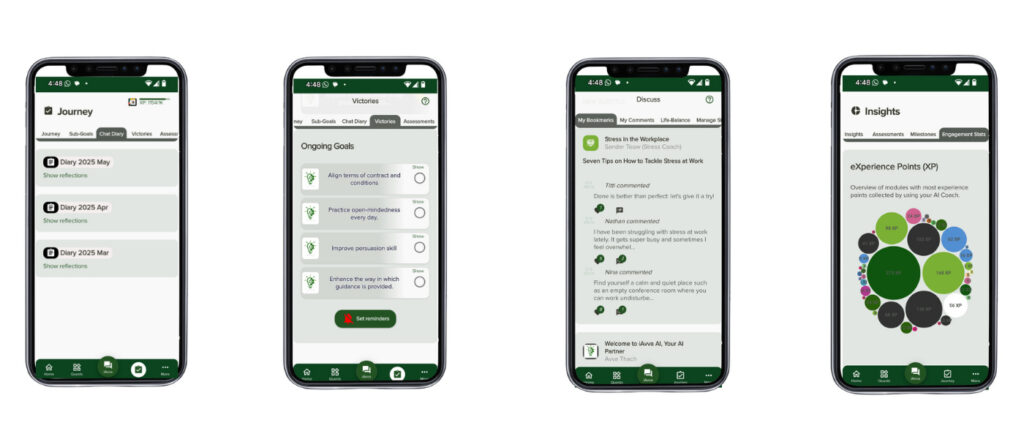Effective training is a cornerstone of organizational success, serving as a catalyst for employee development and overall productivity. In an era where industries are rapidly evolving, the need for a well-trained workforce has never been more critical. Training not only equips employees with the necessary skills to perform their jobs efficiently but also fosters a culture of continuous learning and improvement.
When employees feel competent and confident in their abilities, they are more likely to contribute positively to the organization, leading to enhanced performance and reduced turnover rates. Moreover, effective training can significantly impact an organization’s bottom line. By investing in employee development, companies can reduce errors, improve customer satisfaction, and increase innovation.
A well-trained workforce is better equipped to adapt to changes in the market and technology, ensuring that the organization remains competitive. In addition, effective training programs can help mitigate risks associated with compliance and regulatory requirements, safeguarding the organization from potential legal issues and financial penalties.
Key Takeaways
- Effective training is crucial for the success of an organization as it leads to improved employee performance, increased productivity, and higher job satisfaction.
- Identifying employee training needs involves assessing current skills, knowledge gaps, and future job requirements to tailor training programs accordingly.
- Developing a training program involves setting clear objectives, creating engaging content, and establishing a structured curriculum to meet the identified needs.
- Utilizing various training methods such as classroom training, e-learning, on-the-job training, and simulations can cater to different learning styles and preferences.
- Implementing hands-on training allows employees to apply their learning in real-life scenarios, leading to better retention and practical skill development.
Identifying Employee Training Needs
Identifying employee training needs is a crucial step in developing an effective training program. This process begins with a thorough assessment of the current skills and competencies of the workforce. Organizations can utilize various methods to gather this information, including surveys, interviews, and performance evaluations.
By understanding the existing skill gaps, organizations can tailor their training initiatives to address specific areas that require improvement. Furthermore, it is essential to consider the future direction of the organization when identifying training needs. As industries evolve, new skills may become necessary for employees to remain relevant in their roles.
Engaging with employees through discussions and feedback sessions can provide valuable insights into their perceived training needs and aspirations. This collaborative approach not only helps in pinpointing skill gaps but also fosters a sense of ownership among employees regarding their professional development.
Developing a Training Program

Once training needs have been identified, the next step is to develop a comprehensive training program that aligns with organizational goals. A well-structured program should outline clear objectives, content, delivery methods, and assessment criteria. It is essential to ensure that the training program is relevant to the employees’ roles and addresses the specific skills identified during the needs assessment.
In addition to content development, organizations should consider the duration and frequency of training sessions. A balanced approach that combines intensive workshops with ongoing learning opportunities can enhance knowledge retention and application. Furthermore, involving subject matter experts in the development process can ensure that the training material is accurate, up-to-date, and engaging for participants.
Utilizing Various Training Methods
| Training Method | Effectiveness | Cost | Time Required |
|---|---|---|---|
| On-the-job Training | High | Low | Medium |
| Classroom Training | Medium | Medium | High |
| Online Training | High | Low | Low |
| Simulations | High | High | High |
To cater to diverse learning styles and preferences, organizations should utilize a variety of training methods in their programs. Traditional classroom-based training can be effective for delivering foundational knowledge, while e-learning modules offer flexibility for employees to learn at their own pace. Blended learning approaches that combine both methods can provide a comprehensive learning experience.
Incorporating interactive elements such as group discussions, role-playing, and simulations can also enhance engagement and retention.
Additionally, leveraging technology such as virtual reality or gamification can make training more enjoyable and memorable, ultimately leading to better outcomes.
Implementing Hands-on Training
Hands-on training is an invaluable component of any effective training program. This approach allows employees to apply theoretical knowledge in real-world scenarios, reinforcing their learning and building confidence in their abilities. By providing opportunities for practical application, organizations can ensure that employees are not only familiar with concepts but also capable of executing them in their daily tasks.
Moreover, hands-on training fosters collaboration among team members, encouraging knowledge sharing and teamwork. When employees work together on projects or simulations, they can learn from one another’s experiences and perspectives. This collaborative environment not only enhances skill development but also strengthens interpersonal relationships within the organization.
Measuring Training Effectiveness

Measuring the effectiveness of training programs is essential for determining their impact on employee performance and organizational goals. Organizations should establish clear metrics and evaluation criteria before implementing training initiatives. These metrics may include pre- and post-training assessments, employee feedback surveys, and performance indicators related to job performance.
Regularly evaluating training effectiveness allows organizations to identify areas for improvement and make necessary adjustments to their programs. By analyzing data collected from assessments and feedback, organizations can gain insights into which aspects of the training were successful and which may need refinement. This continuous improvement process ensures that training remains relevant and effective over time.
Providing Ongoing Support and Feedback
Training does not end once the initial program is completed; ongoing support and feedback are crucial for reinforcing learning and promoting continuous development. Organizations should establish mechanisms for providing regular feedback to employees on their performance and progress after training sessions. This feedback can help employees understand how well they are applying their newly acquired skills and where they may need further improvement.
Additionally, creating a supportive environment where employees feel comfortable seeking assistance or clarification can enhance their learning experience. Mentorship programs or peer support groups can provide valuable resources for employees as they navigate new challenges in their roles. By fostering a culture of continuous support, organizations can empower employees to take ownership of their development journey.
Encouraging Employee Engagement
Employee engagement is a vital factor in the success of any training program. When employees are actively engaged in their learning process, they are more likely to retain information and apply it effectively in their roles. Organizations can encourage engagement by involving employees in the design and delivery of training programs, allowing them to contribute their insights and preferences.
Furthermore, recognizing and rewarding employee achievements related to training can boost motivation and enthusiasm for learning. Celebrating milestones or providing incentives for completing training programs can create a positive atmosphere that encourages ongoing participation in professional development initiatives. By prioritizing employee engagement, organizations can cultivate a workforce that is committed to continuous improvement.
Incorporating Technology in Training
In today’s digital age, incorporating technology into training programs is essential for enhancing learning experiences. E-learning platforms, mobile applications, and virtual classrooms offer flexibility and accessibility for employees to engage with training materials anytime and anywhere. These technological tools can also facilitate personalized learning experiences tailored to individual needs.
Moreover, utilizing data analytics can provide valuable insights into employee progress and engagement levels during training sessions. Organizations can track participation rates, completion times, and assessment scores to identify trends and areas for improvement. By leveraging technology effectively, organizations can create dynamic training programs that resonate with modern learners.
Addressing Diversity in Training
Diversity is an essential consideration when developing training programs. Organizations must recognize that employees come from various backgrounds, cultures, and experiences that influence their learning styles and preferences. Tailoring training initiatives to accommodate diverse perspectives fosters inclusivity and ensures that all employees feel valued in the learning process.
Incorporating diverse voices into training content can also enhance its relevance and relatability. By including case studies or examples that reflect different cultural contexts or experiences, organizations can create a more engaging learning environment for all participants. Addressing diversity in training not only promotes equity but also enriches the overall learning experience for everyone involved.
Evaluating and Updating Training Programs
Finally, evaluating and updating training programs regularly is crucial for maintaining their effectiveness over time. As industries evolve and new technologies emerge, organizations must adapt their training initiatives accordingly. Conducting periodic reviews of training content, delivery methods, and participant feedback allows organizations to identify areas that require updates or enhancements.
Additionally, staying informed about industry trends and best practices can help organizations remain competitive in their training efforts. Engaging with external experts or attending industry conferences can provide valuable insights into emerging training methodologies or technologies that could benefit the organization. By committing to continuous evaluation and improvement of training programs, organizations can ensure that they remain relevant and impactful in developing their workforce.
In conclusion, effective employee training is essential for organizational success in today’s fast-paced business environment. By identifying training needs, developing comprehensive programs, utilizing various methods, implementing hands-on experiences, measuring effectiveness, providing ongoing support, encouraging engagement, incorporating technology, addressing diversity, and regularly evaluating programs, organizations can create a robust framework for employee development that drives performance and fosters a culture of continuous learning.
In today’s rapidly evolving business landscape, training at a company is not just about imparting skills but also about unlocking the full potential of teams through innovative approaches. One such approach is leveraging AI coaching, which can significantly enhance team performance and drive organizational success. An insightful article on this topic can be found at IAVVA, titled “Leveraging AI Coaching to Unlock Your Team’s Full Potential.” This article delves into how AI-driven coaching can transform team dynamics and improve overall productivity. For more details, you can read the full article ai/2025/09/15/leveraging-ai-coaching-to-unlock-your-teams-full-potential/’>here.
FAQs
What is training at a company?
Training at a company refers to the process of providing employees with the knowledge, skills, and abilities required to perform their job effectively. This can include on-the-job training, workshops, seminars, and other forms of professional development.
Why is training important at a company?
Training is important at a company because it helps employees to develop the skills and knowledge necessary to perform their job effectively. It also contributes to employee satisfaction, retention, and overall productivity.
What are the benefits of training at a company?
The benefits of training at a company include improved employee performance, increased job satisfaction, reduced turnover, and a more skilled and knowledgeable workforce. Training can also lead to improved customer satisfaction and overall business success.
How is training typically conducted at a company?
Training at a company can be conducted through a variety of methods, including in-person workshops, online courses, on-the-job training, mentoring, and coaching. The specific methods used will depend on the company’s needs and resources.
Who is responsible for providing training at a company?
The responsibility for providing training at a company typically falls on the human resources department, as well as individual managers and supervisors. In some cases, external training providers may also be brought in to deliver specialized training programs.




















Leave a Reply